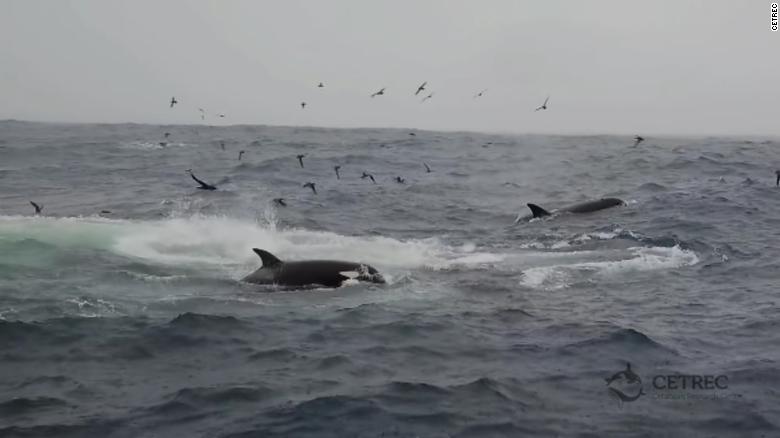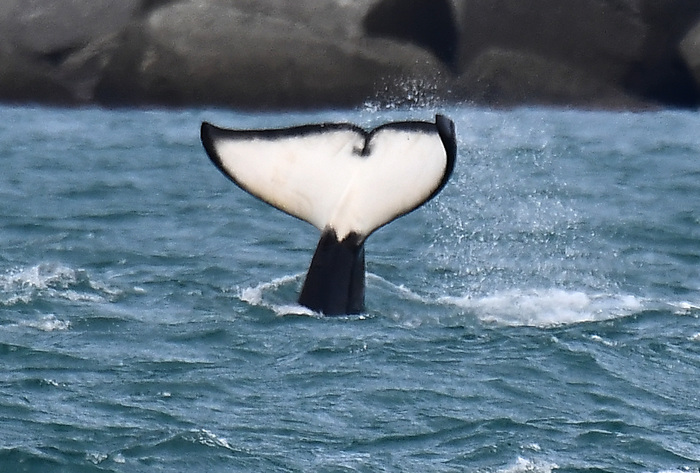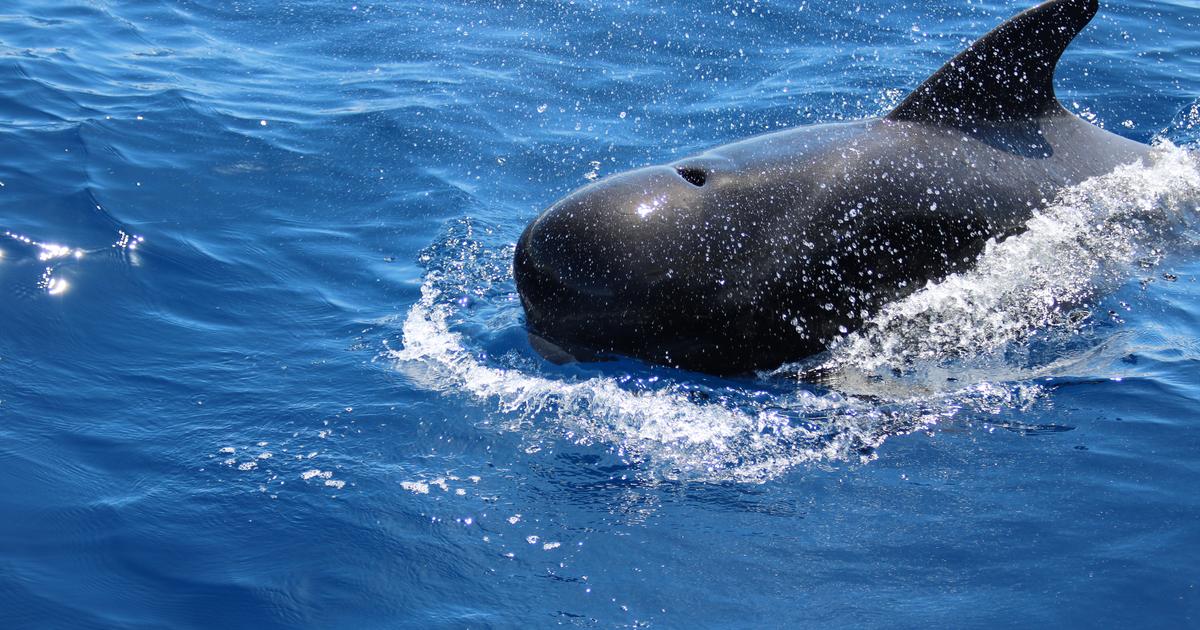This is how a group of killer whales hunts a blue whale 1:04
(CNN) --
For the first time, a pod of killer whales has been recorded hunting and killing an adult blue whale, scientists say.
The hunting episode took place in March 2019 in Bremer Bay, Western Australia, according to research published in the latest issue of the scientific journal
Marine Mammal Science
.
In 2019 and 2021, two other separate killings of blue whale calves were recorded in the same area.
Hungry sharks devouring a large whale force Australia's beaches to close
Although there have been reports of killer whales sporadically attacking blue whales and causing significant injuries, no adult or calf deaths have been confirmed until now, the research added.
When scientists detected the first hunt in March 2019, between 12 and 14 killer whales were already attacking the adult blue whale, which had a deep wound that exposed the bone of its rostrum, or snout.
Bite marks indicated that most of its dorsal fin had also been chewed off.
The orcas - referred to in the study as "killer whales" - continued to attack their prey for 20 minutes, while the adult blue whale "slapped its hands and flicked its tail" as a defense mechanism, according to the research.
The pod killed the whale within an hour of seeing it.
More orcas joined the pod as they fed on the carcass, bringing the total count to about 50. They ripped off chunks of meat and scattered in groups to feed, and nearly 30 orcas were still feeding when the crew left.
In the second hunt, which took place 16 days later, the blue whale calf appeared to be dead after the crew watched the attack for 15 minutes.
Scientists identified 26 killer whales that also participated in the third hunting episode.
The last hunting episode lasted almost three hours and the number of orcas present ranged between 50 and 75.
At least 16 of the same killer whales participated in all three attacks.
Adult female assassins may be more likely to initiate attacks because they have young to feed and therefore need sustenance more often than adult males.
The first hunt attracted numerous seabirds, including fleshy shearwaters, Wilson's storm-petrels, white-faced storm-petrels, and at least one brown albatross.
"They are ferocious and have a preference for squid, fish and beaked whales. Records of the number of beaked whales caught have increased in recent years, and humpback and minke whales are also known to prey on this region," said John Totterdell, a researcher of the Cetacean Research Center that participated in the research.
"It has been suggested that killer whale predation has prevented the recovery of the gray whale population in the northwestern Pacific; however, in Australia, with many species of whales known to be targeted by killer whales, the impact of their predation on these populations remains unknown.
"This study, combined with our recent research, highlights the need for a better understanding of orca population ecology in order to better determine their impact on the marine ecosystem in Australian waters."
Orcas are the largest member of the dolphin family, but they were dubbed "killer whales" by ancient mariners who observed pods of orcas preying on larger whale species, according to the nonprofit Whale and Dolphin Conservation.
Blue whales are the largest animals on Earth and can weigh up to 33 tons, which is the equivalent of about 33 elephants, according to the World Wide Fund for Nature.
The main threats to their survival are the climate crisis and the loss of their habitat, as well as entanglement in fishing nets.
Blue whale













